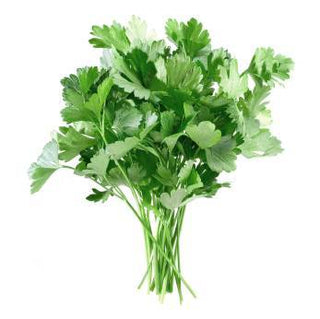(Petroselinum crispum) Curled parsley
(Petroselinum neapolitanum) Italian parsley
The two most common varieties of parsley include curly leaf and flat leaf (Italian). With its dark leaves, clean, crisp taste, curly leaf parsley is added to soups and stews and commonly used as a garnish. The lighter green, flat leaf parsley has a less intense flavor and holds up well in heat. But, due to its saw toothed leaf, flat leaf parsley does not work as well for garnishing.
Health Benefits:
Myristicin, a compound in found in the essential oils of parsley, has show in animal studies have shown to inhibit tumor formation, particularly in the lungs. It's also known to neutralize carcinogens including those found in cigarette smoke. The flavonoids in parsley, especially luteolin have been shown to function as antioxidants.
Nutritional Value:
Fresh parsley contains a more concentrated source of vitamin K than dried, providing 61.5 mcg or 77% of daily values per tablespoon. It is also a good source of vitamin C and the carotenoids lutein and zeaxanthin.
Recipe Ideas:
Of all the fresh herbs, curly parsley is the most widely available. If buying fresh, be sure to wash thoroughly in cold water to eliminate any dirt from the curly leaves. Fresh parsley is more flavorful than dried. Parsley adds flavor to soups, stews and main dishes like fish and poultry. Parsley is a key ingredient, along with mint in the Middle Eastern salad called tabouleh. Add fresh Italian parsley to a salad to boost the nutrient content.
Interesting Facts:
The botanical name Petroselinum comes from the Greek word for stone, which is petro, given to parsley because it was found growing on rocky hillsides in Greece. Parsley is used in the Hebrew celebration of Passover as a symbol of spring and rebirth. Parsley is a great breath freshener at the end of a meal.

